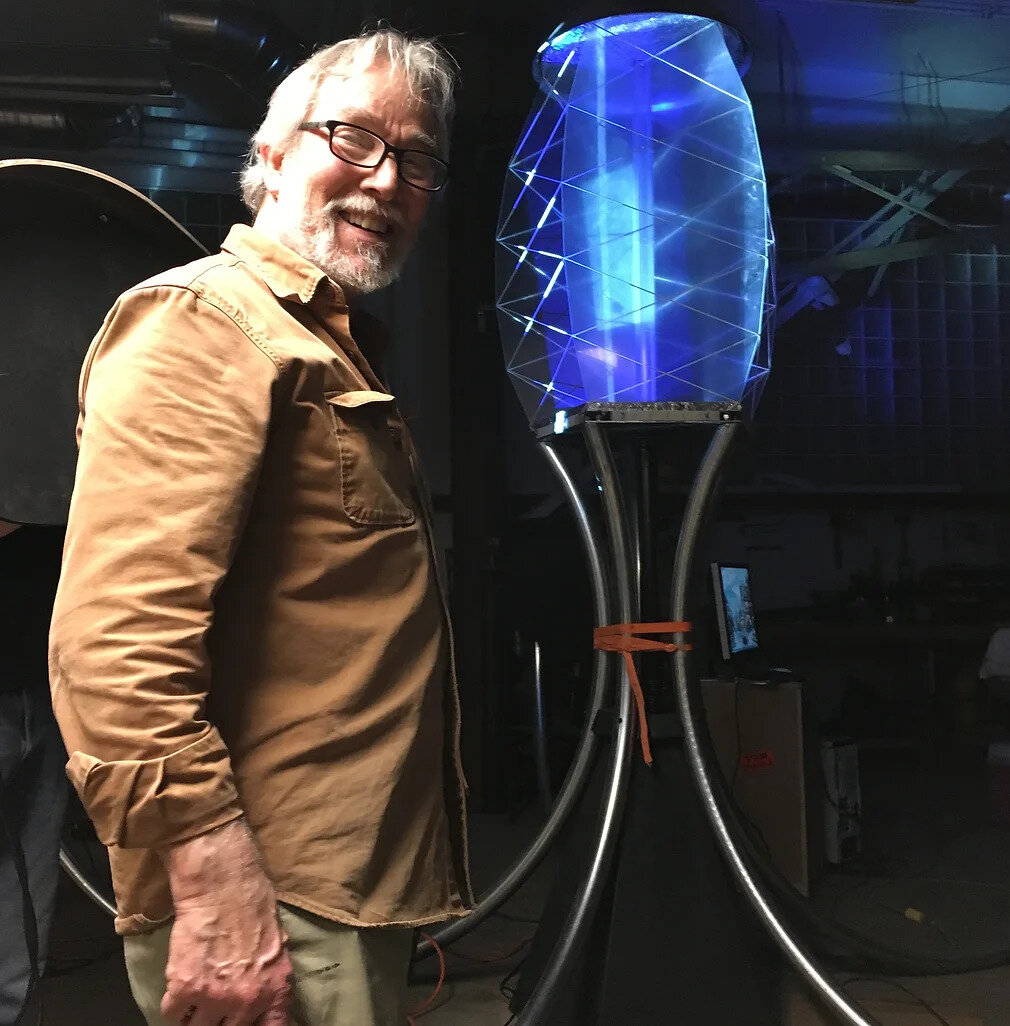
Martin Eichinger was in his mid-20s when he began sculpting “Windlord,” one of Lansing’s monumental sculptures, for the celebration of the nation’s bicentennial. Today, the sculpture sits on the Grand River at Adado Riverfront Park.
A 2021 biography, “From the Heart,” by art critic Richard Speer, details Eichinger’s 50-year career as a sculptor. In the book, Speer describes how Eichinger was barely out of college when he approached the City of Lansing to fund a public art project recognizing the nation’s anniversary.
It wasn’t a typical old-white-guy sculpture of one of the nation’s founders but rather a 16-foot-tall abstract eagle with a black countenance, searing hunter’s eyes and a spreading wingspan.
At first, the proposed sculpture wasn’t widely desired.
“At the time, the artistic climate was not especially receptive to abstract or semi-abstract sculpture,” Eichinger says in the book.
Yet he persisted, and local foundations stepped up to help fund the project. One major source of funding was the recently passed Comprehensive Employment and Training Act, which was a massive program in the 1970s meant to put the unemployed to work in public service jobs. Fortunately for Eichinger, the act, in a throwback to the widely successful Works Progress Administration, helped pay his salary.
Almost simultaneously, a local filmmaker, Joan Stieber, used borrowed equipment from Lansing’s public access cable channel to produce “The Windlord Documentary,” which was shown on WKAR. It’s currently streaming on Vimeo, and I highly recommend you take a look.
They were heady times, and everything seemed possible. Eichinger began the project in the open space behind the newly opened Impression 5 Science Center, which was one of the first children’s science museums in the country. Following the completion and installation of the sculpture, Eichinger began creating exhibits for the science center. It was there he met Marilynne Katzen, Impression 5’s founder. Not long after, they were married, and in 1985, when Marilynne landed a prestigious job as the executive director of the Oregon Museum of Science and Industry, the couple moved to Portland, Oregon. Eichinger continued splitting his time between crafting museum exhibits and fine art.
His career blossomed, and he eventually began working full-time as a sculptor, carving out an important role in the emerging Portland art scene. Working out of a converted warehouse, he created a body of work in less than two decades that’s memorialized in the biography.
A stroke in 2009 was a “minor” setback that took Eichinger’s art in a different direction, Speer writes in the book. It altered his perception of the symmetry of faces and figures. Not to be deterred, though, he opened a creative and entrepreneurial space called Art at the Geode and created two over-the-top installations for the annual Burning Man festival in the desert of Nevada.
One was a 3,500-square-foot bar, lounge and dance floor, complete with a chandelier that misted the crowd. It was widely popular. Another was a phantasmagoric recreation of the biblical Tree of the Knowledge of Good and Evil, with a snake that “could speak, listen, slither and engage in sometimes bawdy behaviors with viewers.”
A Lansing art collector, known as the Lord of Wingspan, purchased two original maquettes from Eichinger in the mid-1980s. A maquette is a miniature rendering of a piece of art.
The “Windlord” maquette is a bronze casting on about a 1-inch-to-1-foot scale.
“It is closer to the intent of his original concept for the installation because it is all bronze, whereas the full-scale model in Adado Park has architectural concrete on the four concave surfaces at the base,” the Lord of Wingspan said.
He believes that the original model was never completed due to financial constraints, but it would’ve reflected light upward on the eagle, creating an “impressive” effect.
The second maquette, titled “Final Adjustments,” shows a godlike figure making adjustments to the universe.
It’s been a long voyage for Eichinger, but the book details how it all started with his eighth-grade art teacher in Midland. It was in Mr. Hop’s class that he developed his philosophy of art, inspired by the Renaissance.
“It was a beautiful life mission, and as an artist, I thought I might be part of this mission by respecting the scientific pursuit of truth and adventure…” he says in the book.
Writers Note: I was one of the artists and writers employed by the Comprehensive Employment and Training Act, and in 1975 or 1976, I photographed Eichinger at work on a public sculpture at his outdoor workshop on the banks of the Grand River. Those photos are now stored in the Archives of Michigan, waiting to be discovered.
I’m also searching for another sculpture executed by Eichinger, called “Aqueous,” which he created for the Michigan School for the Blind.
Support City Pulse - Donate Today!
Comments
No comments on this item Please log in to comment by clicking here